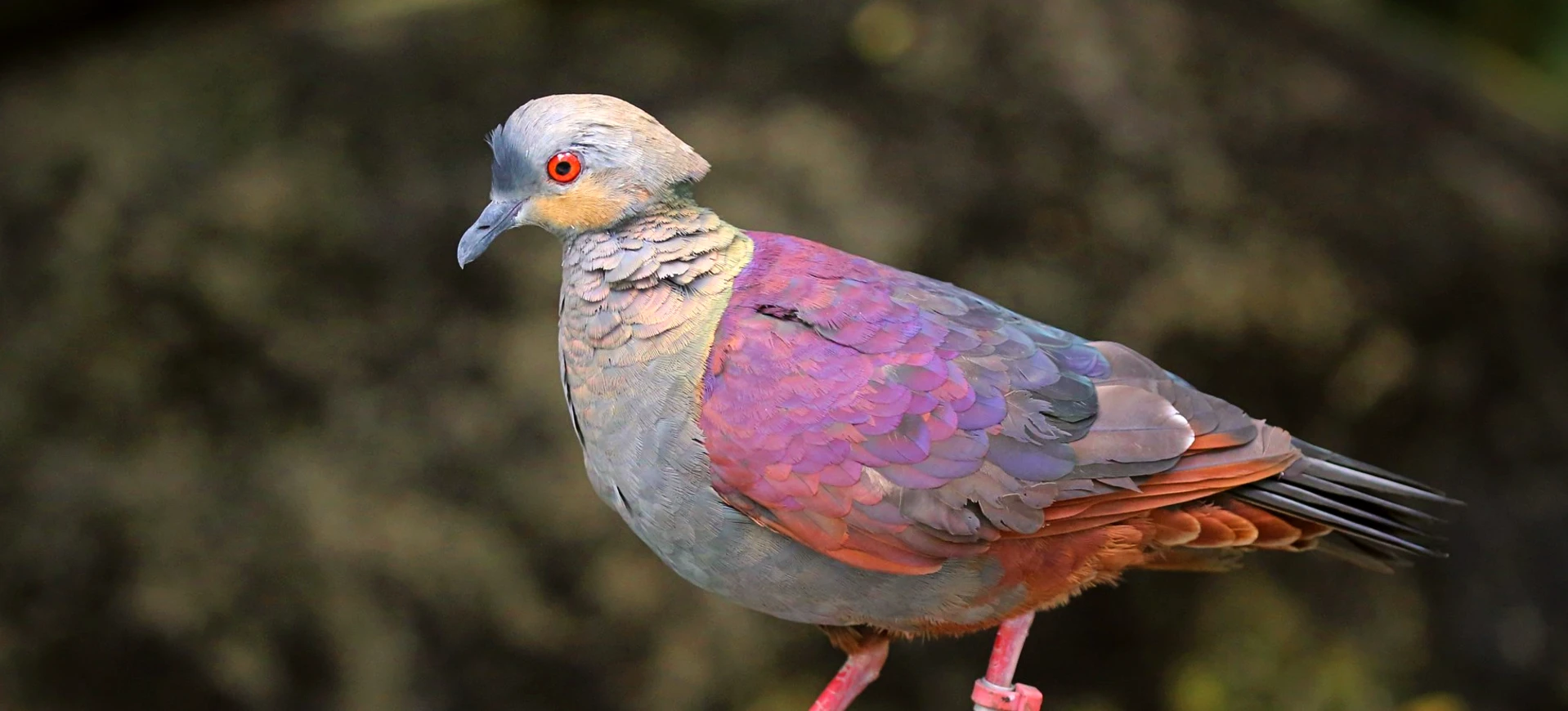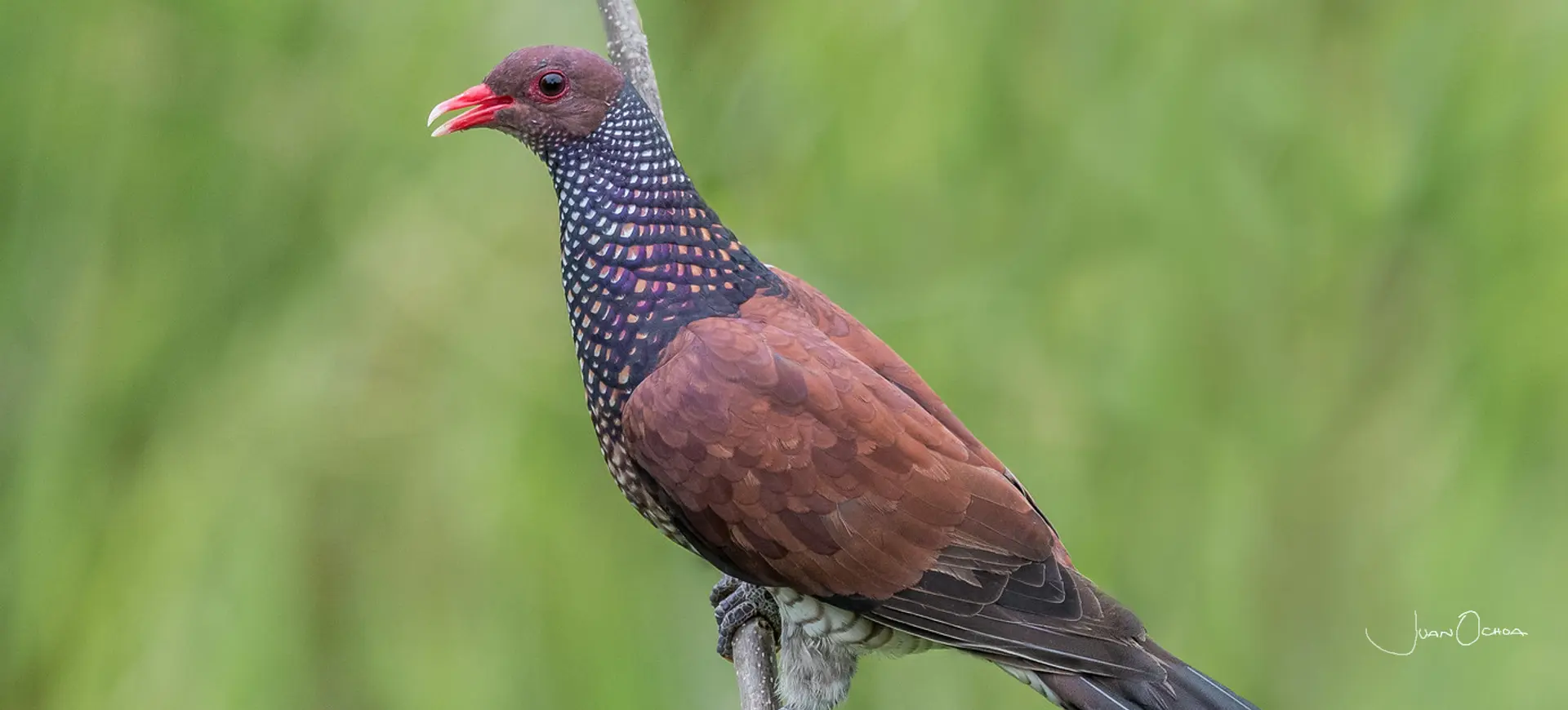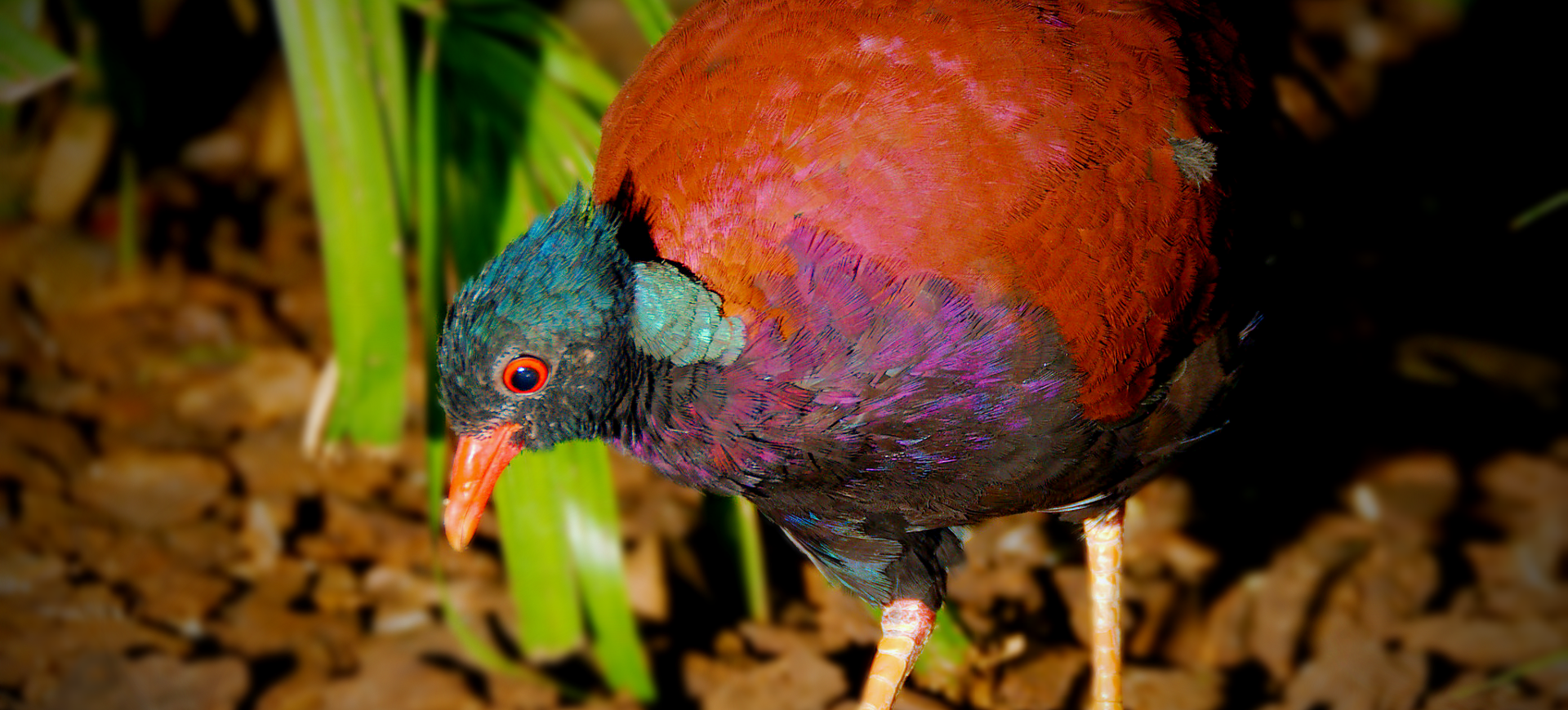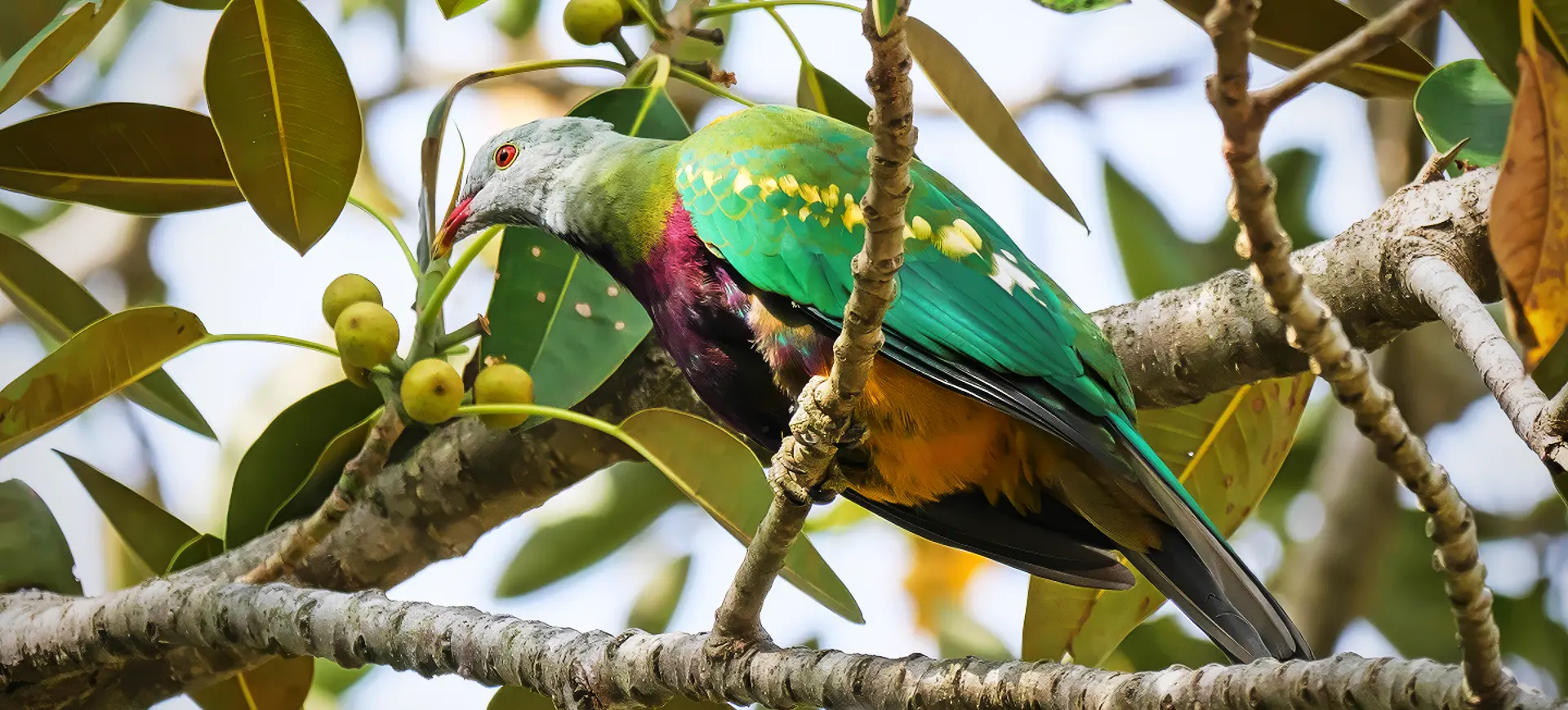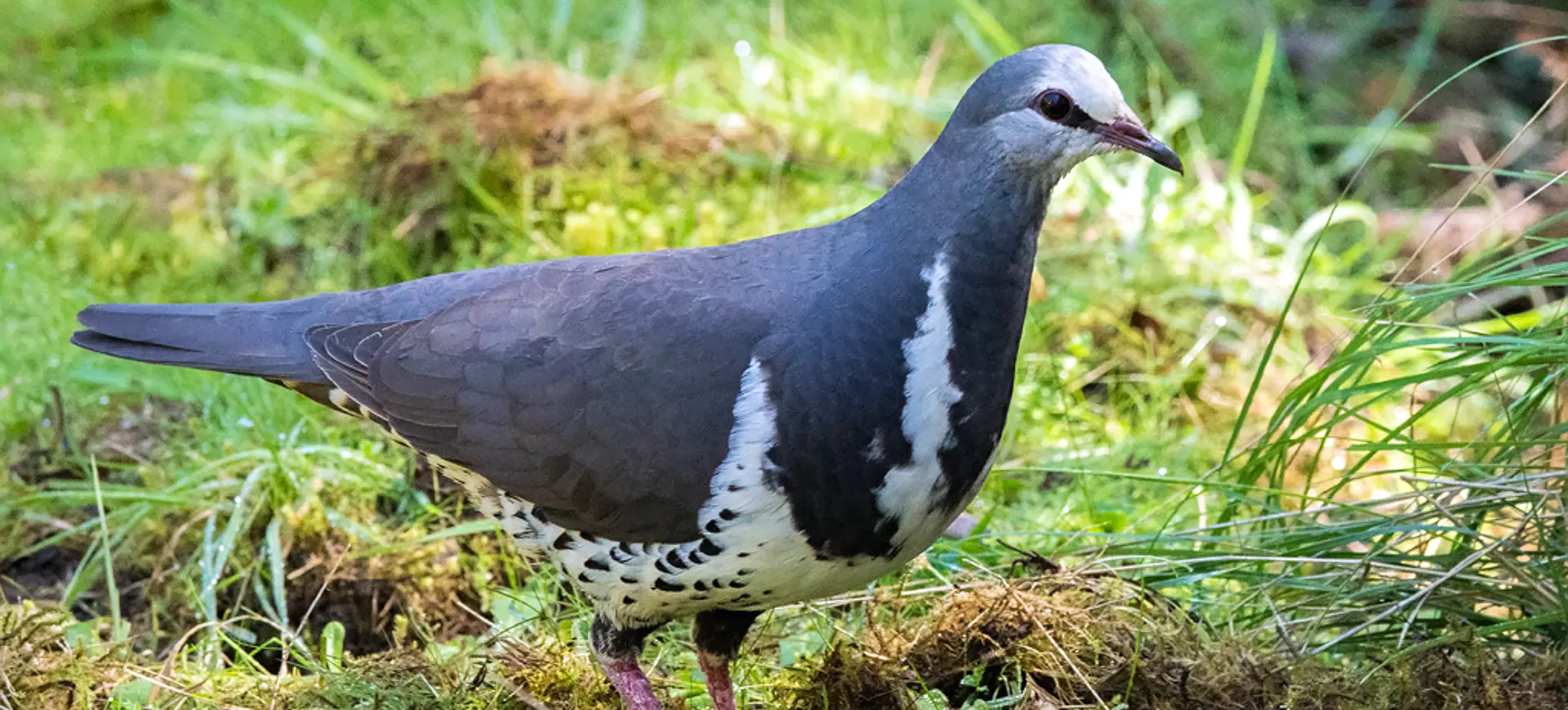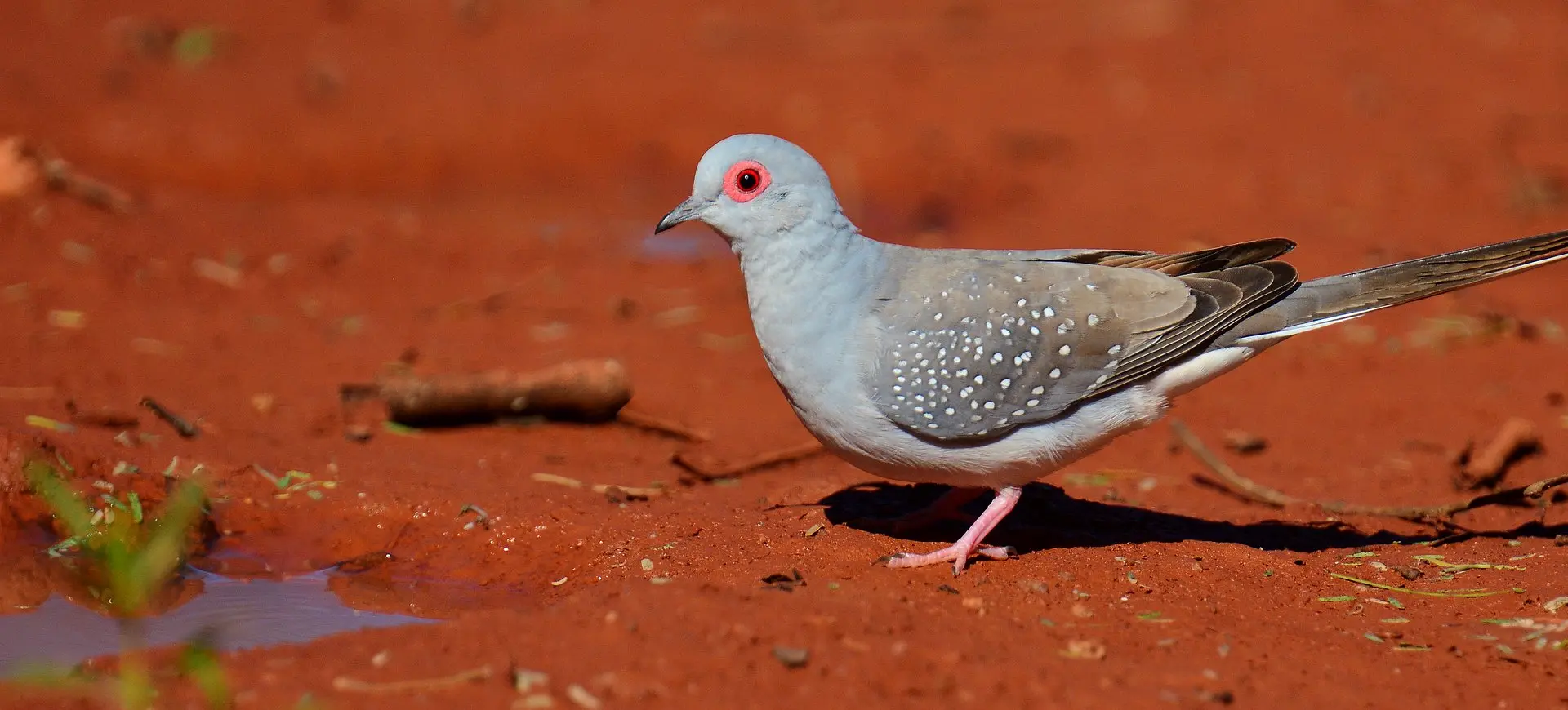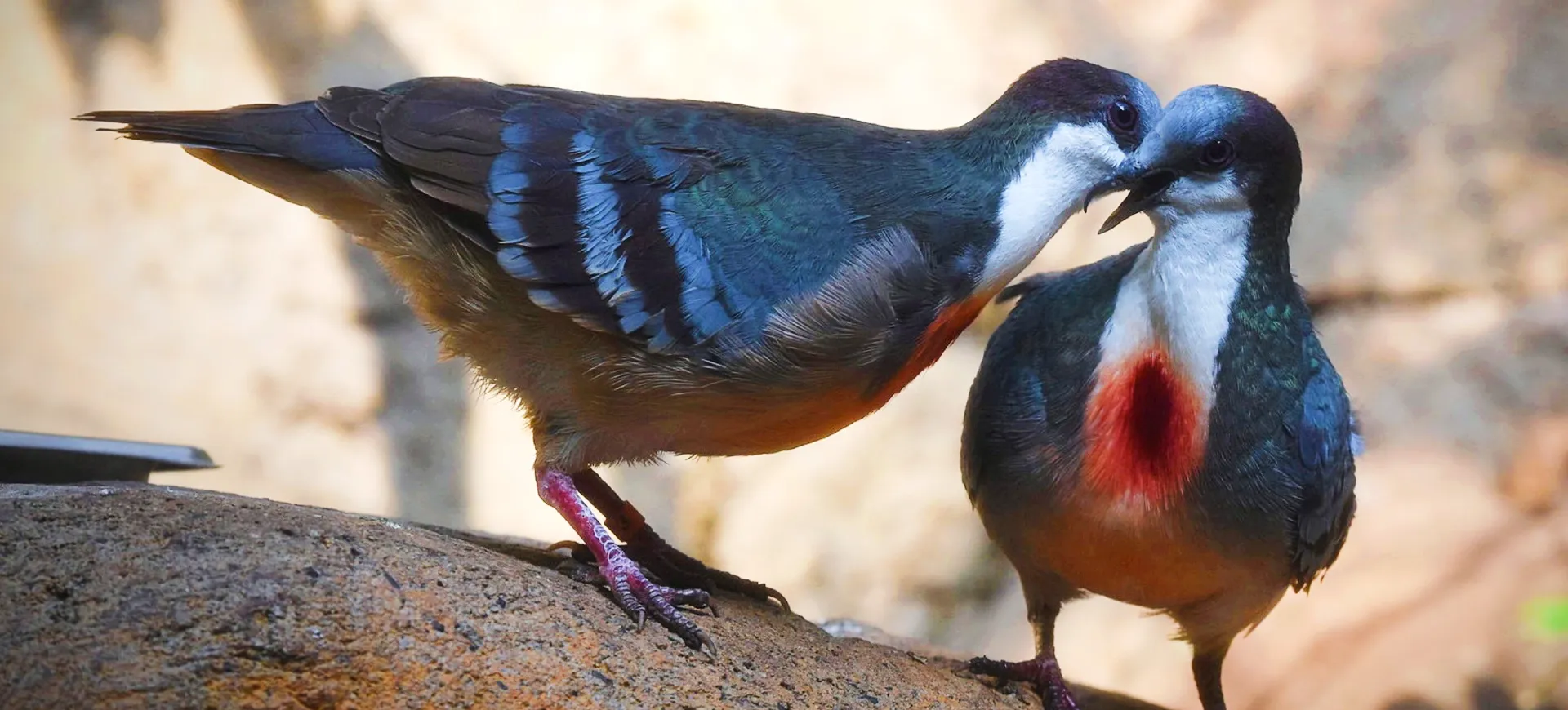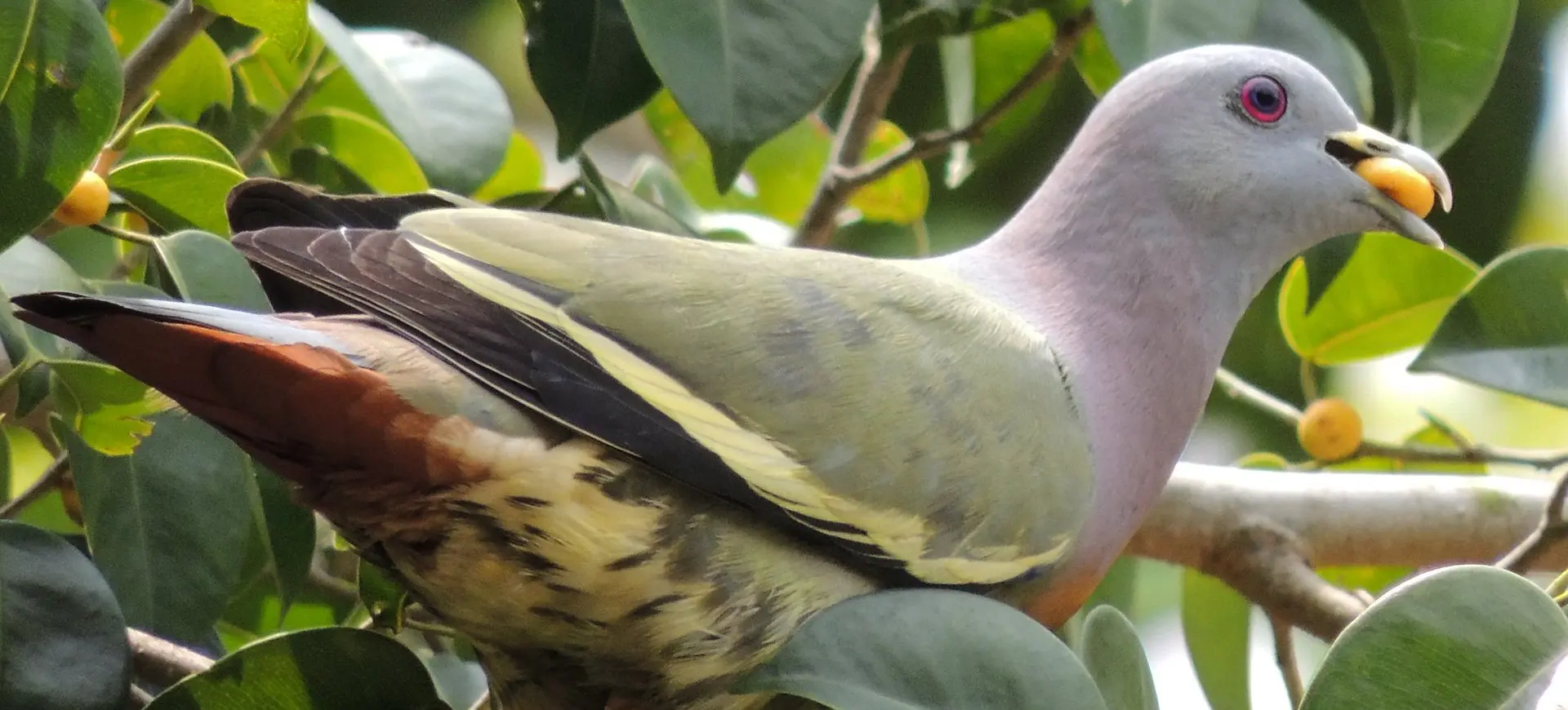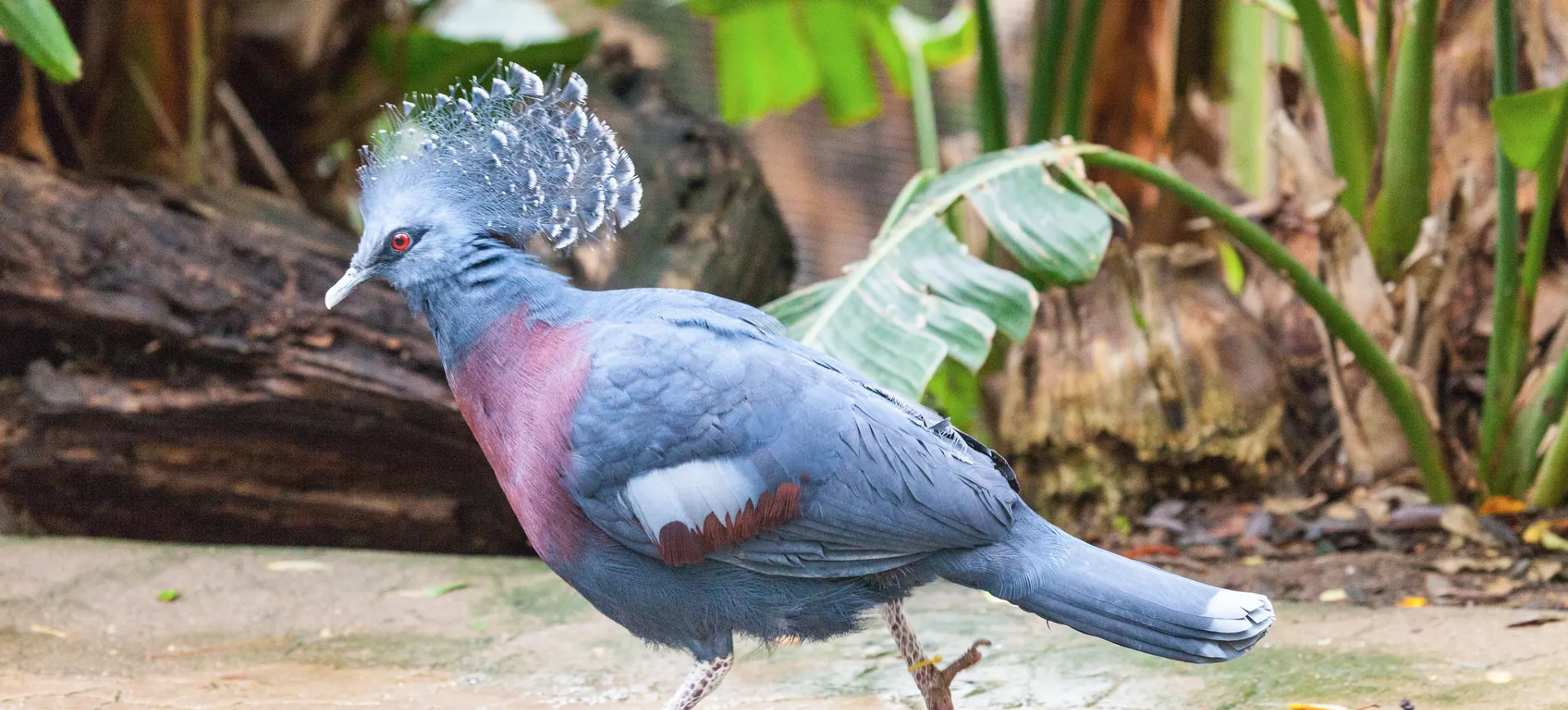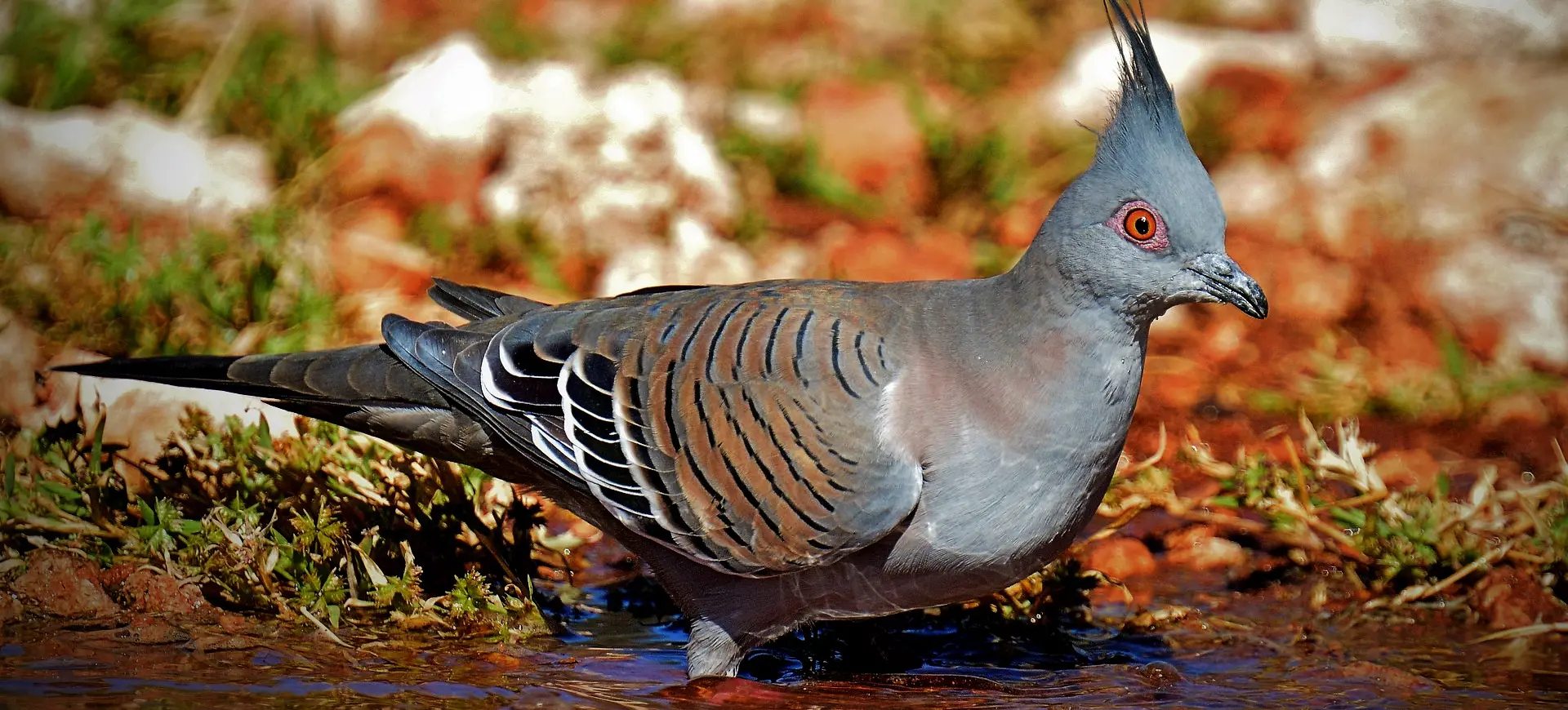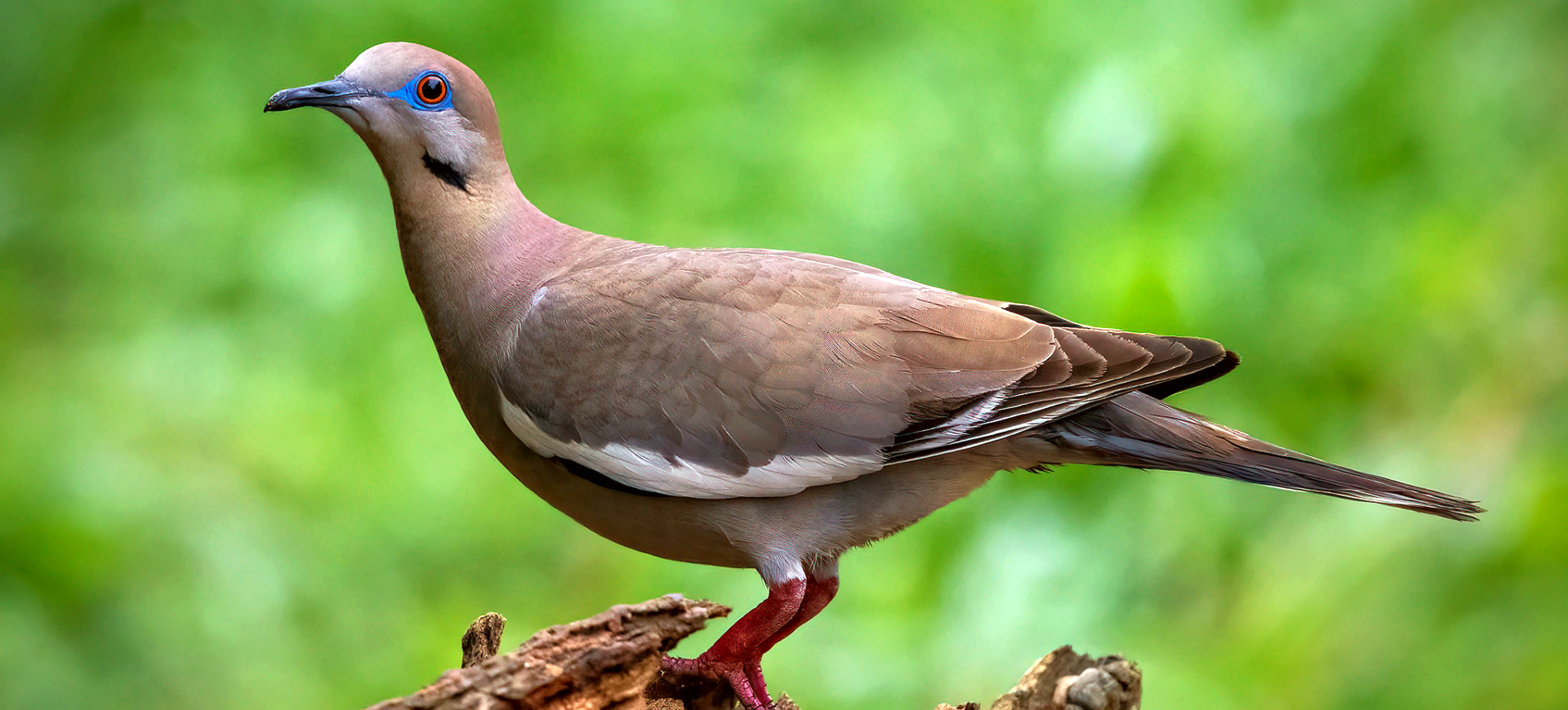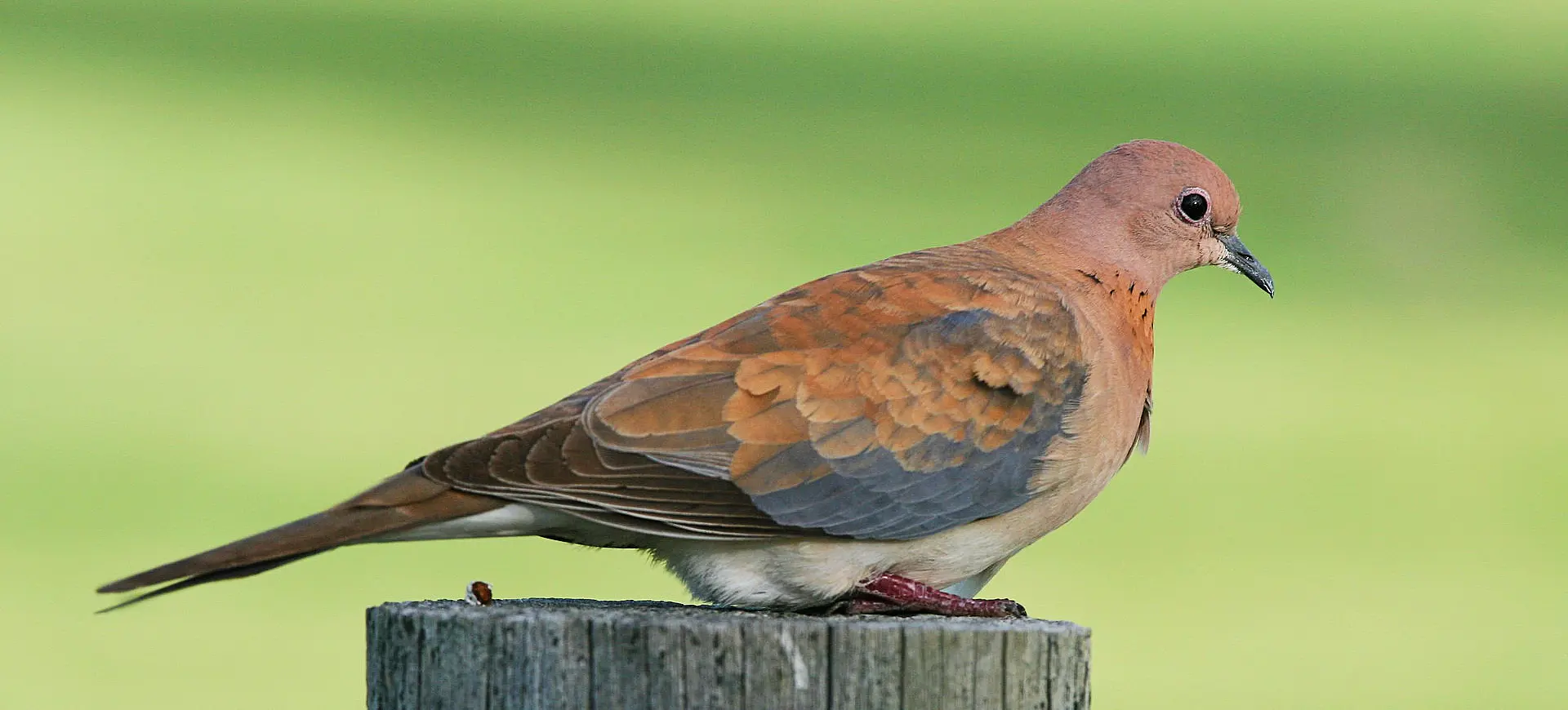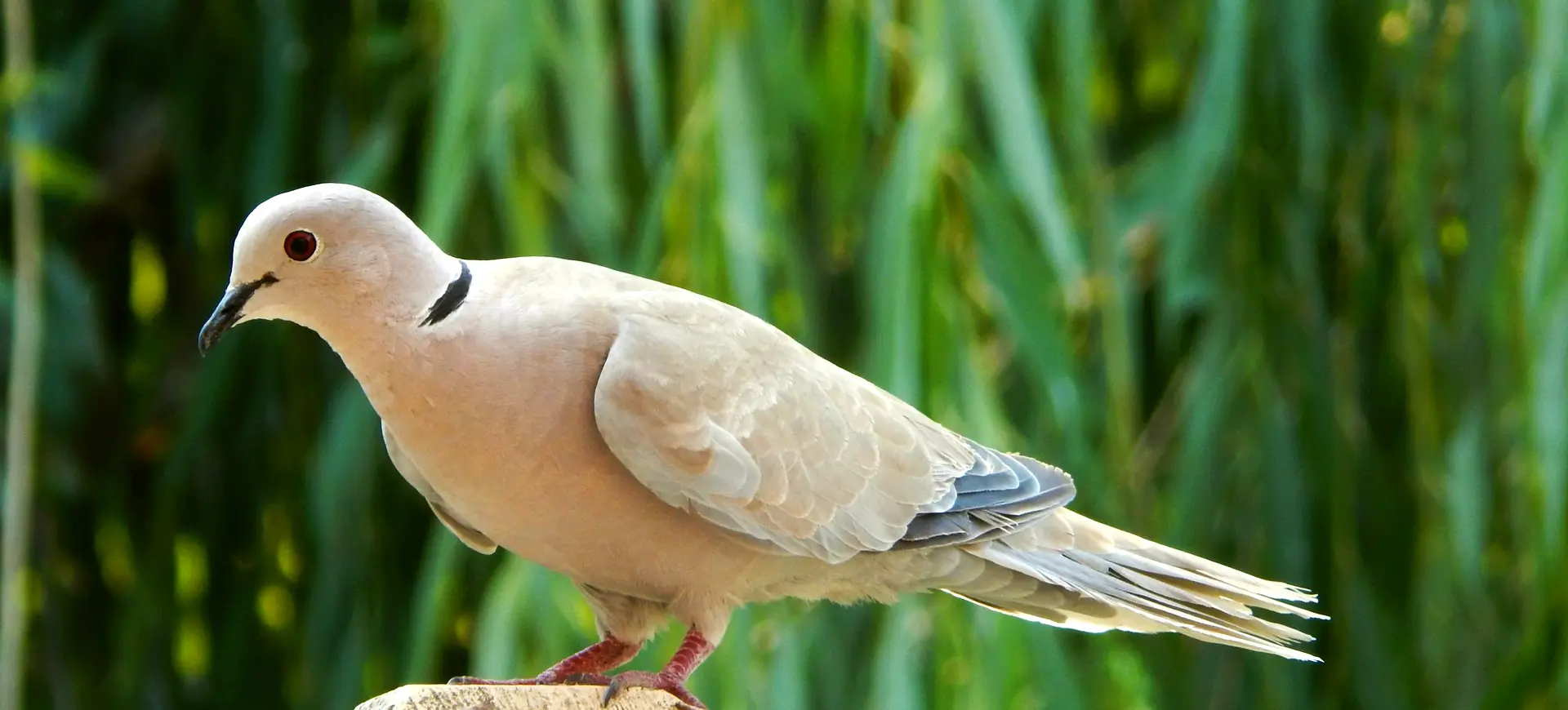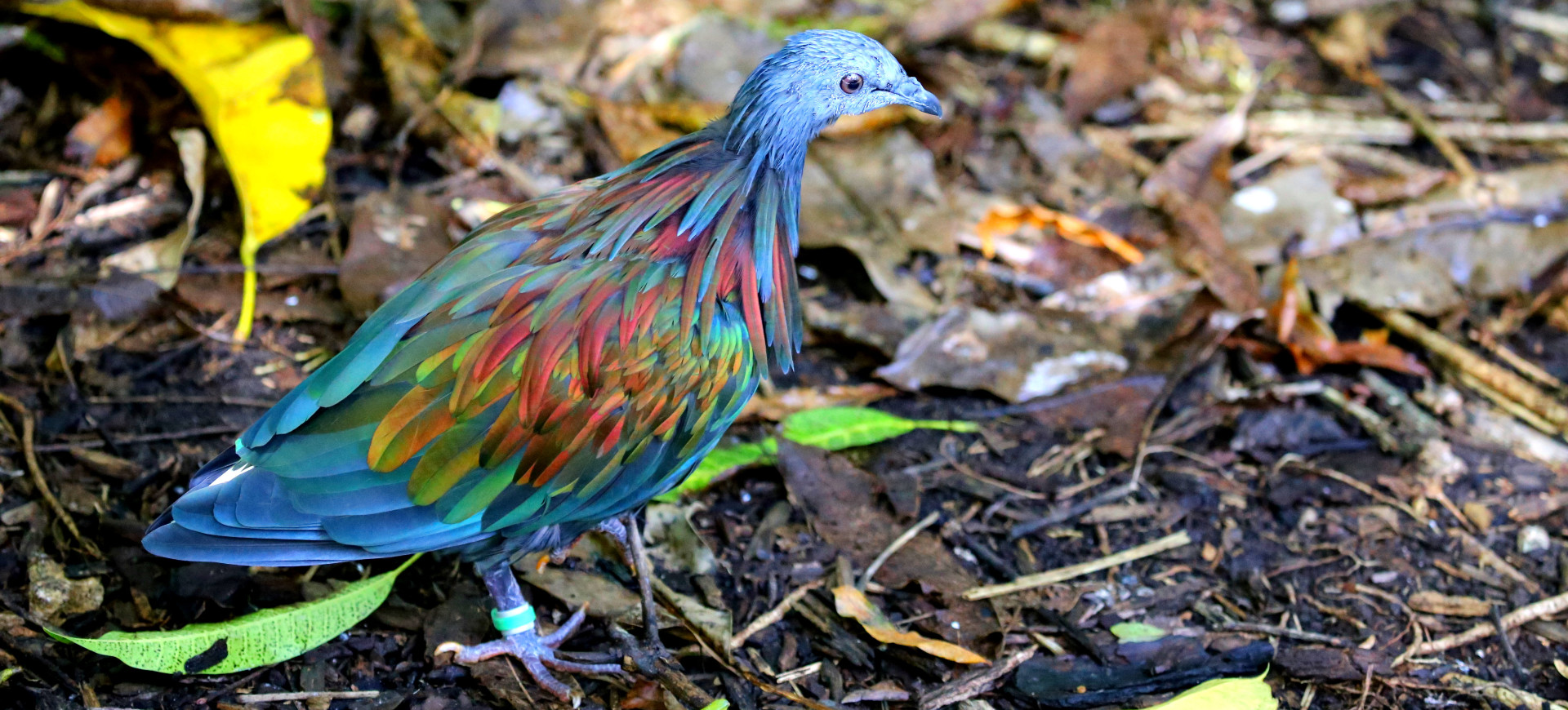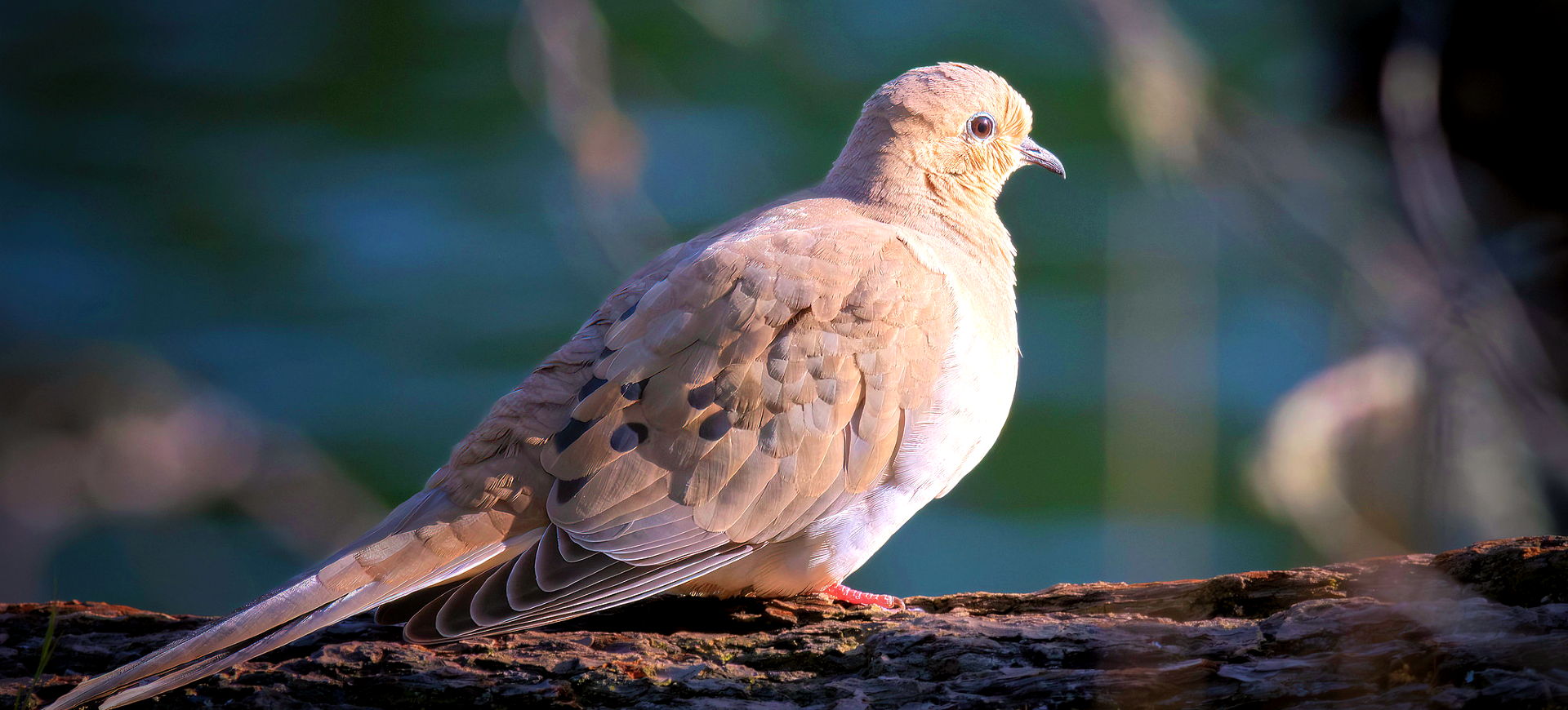Overview
The Common Emerald-Dove, Chalcophaps indica, is a small and beautifully colored pigeon native to various habitats across Southeast Asia, Australia, and the Pacific islands. Characterized by its striking emerald-green wings, the bird’s plumage also includes a rich chestnut color on the back and a pale grey breast, making it a stunning sight in its natural environment. These doves prefer dense forests, woodlands, and gardens where they can find abundant food sources and shelter. Ground feeders primarily consume seeds, fruits, and occasionally small invertebrates, showcasing their adaptable feeding habits.
The Common Emerald-Dove is known for its soft and harmonious call, a characteristic sound within its habitat, contributing to the serene atmosphere of its forests. They exhibit strong territorial behavior, especially during the breeding season, and are often found alone or in pairs. Their nesting sites are typically located in trees or bushes, where they lay two white eggs in a simple platform nest made of twigs. Despite habitat destruction and predation threats, the Common emerald dove has maintained stable populations in many areas thanks to its wide distribution and adaptability to different environments.
The conservation status of the Common Emerald-Dove is of least concern, reflecting its broad distribution and the success of its populations in adapting to human-altered landscapes. However, continuous habitat destruction poses a potential threat to their numbers in certain areas, underscoring the importance of conservation efforts to protect their natural environments. Efforts to preserve forests and woodlands are crucial for this species’ survival and maintaining their ecosystems’ biodiversity. The Common Emerald-Dove reminds us of the beauty and diversity of avian life in tropical regions, making it a vital component of its ecosystem.
Taxonomy
Kingdom
Phylum
Class
Order
Family
Genus
Species
Sub Species
Type
Physical Description:
The Common emerald dove is relatively small for a pigeon, measuring about 23 to 28 centimeters. Its most distinctive feature is the vibrant emerald green color on its wings, which contrasts beautifully against the chestnut brown of its back and the pale grey of its underparts. The tail is short and squared, with a black-and-white pattern visible during flight. Both sexes exhibit similar plumage, though males tend to have a more pronounced green coloration and a small white patch on the edge of their wings.
Juveniles are duller in color than adults, with less pronounced green wings and more uniform grey-brown bodies. Their plumage gradually changes as they mature, developing adulthood’s full, vibrant colors. The Common Emerald-Dove’s slender build and short beak are well-suited for foraging on the ground, where they spend significant time. Despite their delicate appearance, these doves are capable of a fast, direct flight, often seen darting through forest canopies.

Lifespan: Wild: ~10 years || Captivity: ~15 years

Weight: Male & Female: 3.1-4.9 oz (90-140 g)

Length: Male & Female: 9-11 inches (23-28 cm)

Wingspan: Male & Female: 9-11 inches (23-28 cm)

Top Speed: Unknown
Characteristic:
Native Habitat:
The Common Emerald-Dove thrives in various habitats, including tropical and subtropical forests, woodlands, mangroves, and rural gardens across Southeast Asia, Australia, and the Pacific islands. These habitats offer the dense vegetation cover necessary for shelter and nesting and abundant food sources. They prefer humid environments where water sources are readily available, essential for their daily water intake. The Common Emerald-Dove’s adaptability to different environments has enabled it to occupy a wide geographical range, making it a common species in many habitats.
Their presence in a habitat indicates a healthy, biodiverse ecosystem, as they require a balanced environment for feeding, breeding, and shelter. The degradation of forests and woodlands poses a significant threat to their habitat, emphasizing the need for conservation efforts focused on protecting these areas. The Common Emerald-Dove’s ability to adapt to human-modified landscapes has allowed it to survive in areas where natural habitats have been altered, highlighting the bird’s resilience. However, preserving natural forests and woodlands remains critical for the species’ long-term survival.
Climate Zones:
Biomes:
Biogeographical Realms:
Continents:
Diet:
Diet & Feeding Habits:
The Common Emerald-Dove’s diet mainly consists of seeds, fruits, and occasionally small invertebrates, which it forages on the forest floor. Its feeding habits demonstrate its role as seed dispersers within its ecosystems, contributing to the regeneration of plant life in its habitats. It is particularly attracted to fallen fruits and seeds and is often seen feeding quietly and unobtrusively under the cover of vegetation. Freshwater access is essential for survival and influences its distribution within suitable habitats.
Their adaptability in feeding allows them to inhabit a range of environments, from dense forests to cultivated gardens, where they can find ample food sources. However, the Common emerald dove’s preference for foraging on the ground makes them vulnerable to predators, a risk mitigated by their cryptic coloring and quiet behavior. Conservation of their natural habitats is crucial for ensuring the availability of food resources and the health of their populations. The feeding behavior of these doves highlights the interconnectedness of species within tropical ecosystems, underscoring the importance of biodiversity conservation.
Mating Behavior:
Mating Description:
Common Emerald-Doves are monogamous, with pairs often forming strong bonds for several breeding seasons. Their courtship involves a series of cooing calls and visual displays, where the male shows off his vibrant plumage to attract a mate. They breed throughout the year, depending on food availability and suitable nesting conditions. The nest is a simple platform of twigs and leaves, typically placed in a tree or bush.
The female usually lays two white eggs, which are incubated by both parents, showcasing their cooperative approach to reproduction. The chicks are altricial, requiring care and feeding from both parents until ready to fledge. This shared parental responsibility ensures the survival of the offspring, with the parents often fiercely defending their nest from potential predators. The breeding behavior of the Common emerald dove highlights its adaptability and resilience, enabling it to sustain its populations across a wide range of habitats.
Reproduction Season:
Birth Type:
Pregnancy Duration:
Female Name:
Male Name:
Baby Name:
Social Structure Description:
Common Emerald-Doves are typically solitary or found in pairs, reflecting their territorial nature, especially during the breeding season. They demonstrate strong pair bonds, with monogamous pairs often remaining together throughout the year. Outside of breeding, they may form small flocks, particularly in areas with abundant food resources, where they can be seen foraging together on the ground.
The social interactions of Common Emerald-Doves involve a range of vocalizations used for communication between mates and to establish territorial boundaries. Their ability to form lasting pair bonds is key to their reproductive success, ensuring parental care for their offspring. The social behavior of the Common Emerald-Dove, characterized by its territoriality and strong pair bonds, plays a crucial role in their survival and reproductive strategy, highlighting the complexity of their interactions within their ecosystems.
Groups:
Conservation Status:
Population Trend:
Conservation authorities classify the common emerald dove as the least Concerned, reflecting its extensive distribution and stable population trend. This status, however, does not diminish the importance of conservation efforts, as habitat destruction and fragmentation remain potential threats in certain areas. The dove’s adaptability to various environments has been crucial in maintaining stable populations, but preserving its natural habitats is essential for its continued survival.
Conservation efforts focused on protecting tropical and subtropical forests, woodlands, and mangroves are vital for the Common Emerald-Dove and the biodiversity of these ecosystems. Monitoring populations and habitat quality can help identify areas where conservation action is needed. The bird’s widespread presence and adaptability make it a resilient species, but continued vigilance is necessary to ensure that environmental changes do not adversely affect their populations.
Population Threats:
The main threats to the Common Emerald-Dove include habitat destruction and fragmentation due to logging, agriculture, and urban expansion. In some areas, predation by introduced species and hunting pose additional risks. The loss of natural habitats can lead to decreased food availability and nesting sites, impacting their ability to reproduce and sustain their populations.
Efforts to mitigate these threats involve habitat protection, sustainable land-use practices, and invasive species control. Public awareness and engagement in conservation activities can also significantly protect the Common Emerald-Dove and its habitat. Addressing the challenges of habitat destruction and environmental change is crucial for the preservation of this species and the ecological balance of their habitats.
Conservation Efforts:
Conservation efforts for the Common emerald dove include habitat protection and restoration, particularly in areas where deforestation and land-use change threaten their natural environments. Establishing protected areas and implementing sustainable forestry and agricultural practices can help preserve the habitats essential for their survival. Conservation programs that focus on reforestation and rehabilitating degraded lands are also important for restoring the ecosystems they inhabit.
Engagement with local communities and stakeholders is key to the success of conservation initiatives, promoting practices that benefit both wildlife and people. Educational programs that raise awareness about the importance of biodiversity and the role of species like the Common Emerald-Dove in their ecosystems can foster support for conservation efforts. By working together, it is possible to ensure the long-term survival of the Common Emerald-Dove and the rich biodiversity of tropical and subtropical regions.
Additional Resources:
Fun Facts
- Common emerald doves have a distinctive, metallic wing whistle that can be heard during takeoff and landing, adding to their unique character.
- They are among the few dove species with such vibrant green plumage, making them a beautiful sight in their natural habitat.
- In addition to seeds and fruits, Common Emerald-Doves occasionally eat small insects, showing their opportunistic feeding behavior.
- Their nests are often reused for multiple breeding attempts within the same year, demonstrating their resourcefulness.
- Despite their small size, Common Emerald-Doves are capable of long flights, especially when moving between islands in the Pacific.
- They play an important role in their ecosystems as seed dispersers, contributing to the health and regeneration of forests and woodlands.
- The tranquility of their soft cooing calls makes them a beloved presence in the regions they inhabit.
- Conservation efforts for the Common Emerald-Dove help protect this species and support the broader conservation of tropical biodiversity.





